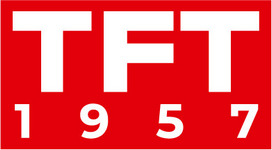Blackmagic Design announced today that French pop rock band Indochine’s Central Tour relied on Blackmagic URSA Broadcast G2 cameras and ATEM Constellation 8K live production switcher.
The concerts saw the band perform in five cities across France to celebrate their 40th anniversary. With PRG France and PRG Projects designing the 360 degree LED tower, Video Director Jon Shrimpton produced the tour’s live visuals.
With the need to set up and wire 20 cameras in some of France’s biggest stadiums, the video village solution had to be easy and quick to deploy, according to Lucien Peron, freelance broadcast engineer in charge of the clean feed. “We had limited time and resources for set up, so I worked with PhotoCineRent in Paris to supply the tour with a PPU workflow that I knew and trusted,” he says.
“I chose the URSA Broadcast G2, and Blackmagic URSA Mini Pro 4.6K G2 digital film camera with motorized PL zooms from Canon,” continues Peron. “They work well with the iris control through the Blackmagic protocol and are straightforward to use.”
The live video employed four URSA Broadcast G2 cameras at each corner of the stadium, and three URSA Mini Pro 4.6K G2 units positioned around the stage’s center. Two additional URSA Mini Pro 4.6K G2 units were operated handheld within the crash barrier, and all cameras were wired using a SMPTE fiber solution for video, power and intercom.
At the long ends of the stage, there were two Blackmagic Pocket Cinema Camera 6Ks with Canon 16-35 EF lenses. These were wired into the video village via SDI using Blackmagic Micro Converter BiDirectional SDI/HDMI 3G, enabling control on these cameras.
On stage were five PTZ cameras wired through SMPTE fiber. At the same time, point of view (POV) cameras were placed at the stadium’s four corners. “We used Blackmagic Pocket Cinema Camera 4Ks to give department technicians a wide angle POV for reference.”
In the control room, all fiber systems were racked up and wired into an ATEM Constellation 8K, providing independent video feeds to technicians while recording different ISO feeds.
“We took full advantage of the four independent multiviewers,” explains Peron. “Since the Constellation acts as both a matrix and format converter, we didn’t need additional video matrix or multiviewer hardware; we could provide as many independent outputs as needed, and the same for multiviews.”
The workflow also relied on two ATEM Camera Control Panels for shading. The tour’s live video director used an ATEM 2 M/E Advanced Panel with the ATEM Constellation 8K to vision mix the four separate 1080p50 feeds going to screen processors.
“Up to four cameras were live on the LED screen, so having the two layers of program (PGM) and preview (PVW) allowed him to mix them simultaneously on the desk,” says Peron.
The ATEM Constellation 8K was the core of all department monitoring feeds. Technicians from other departments also had a Videohub Smart Control Pro panel enabling them to switch their independent outputs on the production switcher. They could switch from a POV camera to the computer visualization of the screen, watch the multiview, or Jon’s quad PGM, depending on their needs.









